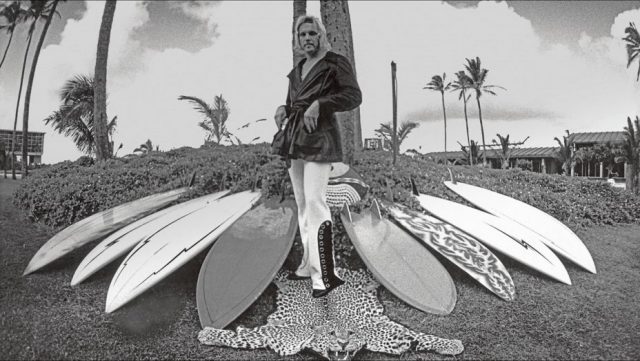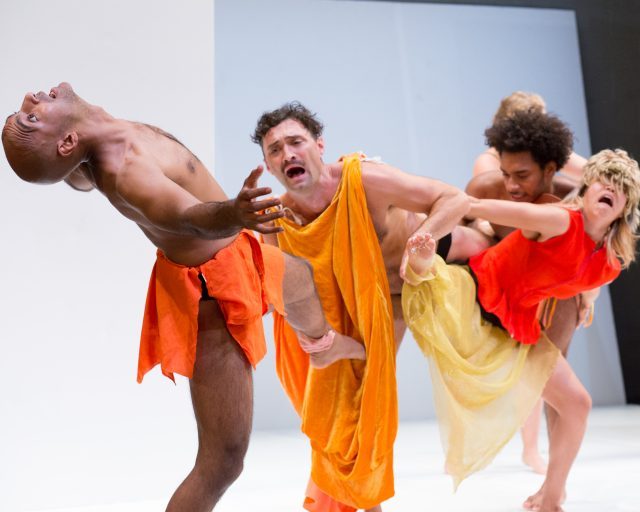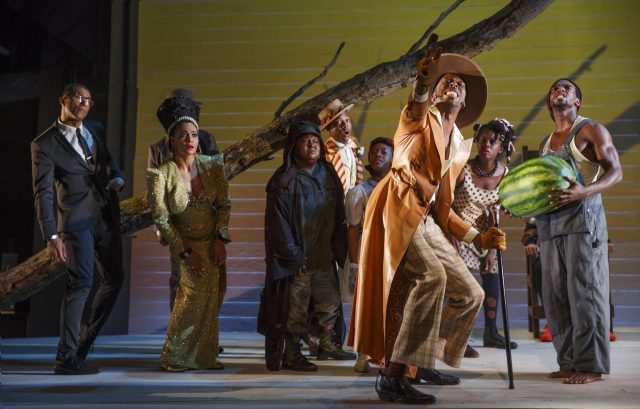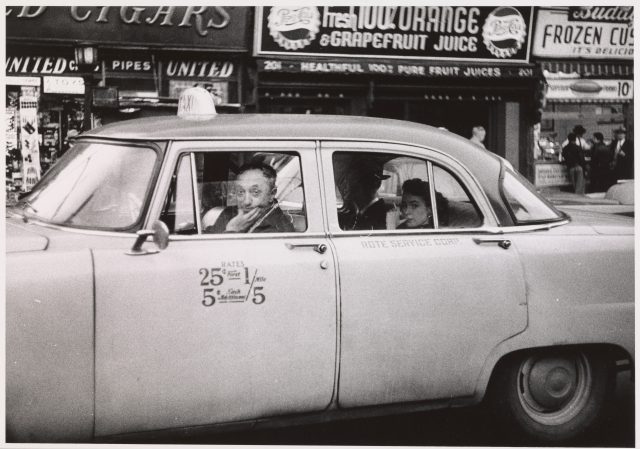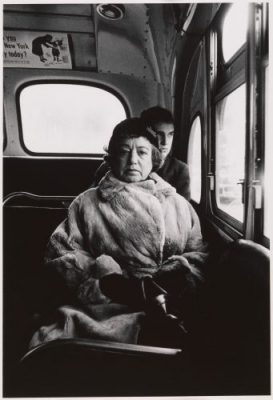
Friends attempt to bring back two dead friends in deep, dark waters in Juan Reina’s DIVING INTO THE UNKNOWN
DIVING INTO THE UNKNOWN (Juan Reina, 2016)
Cinépolis Chelsea
260 West Twenty-Third St. at Eighth Ave.
Thursday, November 17, 5:30
212-691-5519
www.docnyc.net
divingintotheunknown.com
 For his feature-length debut, writer-director Juan Reina was all set to make a documentary in Norway about a group of Finnish friends’ daring attempt to break the world record for longest cave dive. But the narrative quickly changed when two of the divers, Jari Huotarinen and Jari Uusimäki, suffered tragic accidents and died, their bodies trapped underwater. Unable to retrieve the bodies because of safety concerns, the authorities closed off the area to any further diving. But the rest of the Finnish team decides that they cannot leave their friends down there and come up with a plan to secretly dive in and bring them back home for proper burials. A kind of mix between a Werner Herzog adventure documentary, a procedural caper film, and a military rescue drama, Diving into the Unknown follows Sami Paakkarinen, Vesa “Vesku” Rantanen, Kai “Kaitsu” Känkänen, Patrik “Patte” Grönqvist, and others as they decide to risk their lives in the waters that killed their fellow divers. “I do everything I can not to die while diving,” Paakkarinen says early on, later adding, “You should never expect that a dive will go well . . . because then it never does.” Grönqvist notes, “It has to be fun. If it’s not fun, there’s no point in doing it.” But during the rescue attempt, he says, “From the outside this might seem foolishly risky. But life in general can be risky. You cannot prepare for everything that could go wrong. You just cannot practice facing a dead friend at one hundred and ten meters.” No matter how many dives they’ve been on together, each new one comes with its own obstacles and dangers; when the men say goodbye to their respective families, they know deep down that they might not return alive. And it’s not just the physical aspects of diving that place them in jeopardy; several discuss the emotional and psychological trauma that could impact their safety, especially when diving to recover two of their closest friends.
For his feature-length debut, writer-director Juan Reina was all set to make a documentary in Norway about a group of Finnish friends’ daring attempt to break the world record for longest cave dive. But the narrative quickly changed when two of the divers, Jari Huotarinen and Jari Uusimäki, suffered tragic accidents and died, their bodies trapped underwater. Unable to retrieve the bodies because of safety concerns, the authorities closed off the area to any further diving. But the rest of the Finnish team decides that they cannot leave their friends down there and come up with a plan to secretly dive in and bring them back home for proper burials. A kind of mix between a Werner Herzog adventure documentary, a procedural caper film, and a military rescue drama, Diving into the Unknown follows Sami Paakkarinen, Vesa “Vesku” Rantanen, Kai “Kaitsu” Känkänen, Patrik “Patte” Grönqvist, and others as they decide to risk their lives in the waters that killed their fellow divers. “I do everything I can not to die while diving,” Paakkarinen says early on, later adding, “You should never expect that a dive will go well . . . because then it never does.” Grönqvist notes, “It has to be fun. If it’s not fun, there’s no point in doing it.” But during the rescue attempt, he says, “From the outside this might seem foolishly risky. But life in general can be risky. You cannot prepare for everything that could go wrong. You just cannot practice facing a dead friend at one hundred and ten meters.” No matter how many dives they’ve been on together, each new one comes with its own obstacles and dangers; when the men say goodbye to their respective families, they know deep down that they might not return alive. And it’s not just the physical aspects of diving that place them in jeopardy; several discuss the emotional and psychological trauma that could impact their safety, especially when diving to recover two of their closest friends.
Diving into the Unknown is filled with lush photography by Jarkko M. Virtanen and Tuuka Kovasiipi, who capture the vast, snowy landscapes from the Plura lakeside to the Steinugleflåget dry caves, while Janne Suhonen mans the underwater camera, revealing the dark, mysterious waters where anything can happen. Seamlessly edited by Reina and Riitta Poikselkä and featuring a score by Norwegian singer-songwriter KAADA, the film is a gripping tale that delves deep below the surface; in many of the underwater scenes, it looks as if the divers are floating in the air. “I’ve never really been keen on diving myself, but what really interests me are things like how far ambition can drive people, how much people are willing to sacrifice in order to achieve their goals, and if there’s any clear common denominator amongst people willing to risk their lives to do something they love,” Reina, who was initially inspired to make a film about diving after being given the book Divers of the Dark by Suhonen and Antti Apunen, explains in his director’s statement. Diving into the Unknown exposes both the dedicated, faithful brotherhood of these divers as well as the dangerous challenges they take on every time they put on their wetsuits and strap on their equipment. Diving into the Unknown is making its U.S. premiere on November 17 at Cinépolis Chelsea as part of DOC NYC, the largest nonfiction film festival in the world, with Reina and producer Juho Harjula on hand to talk about the work.
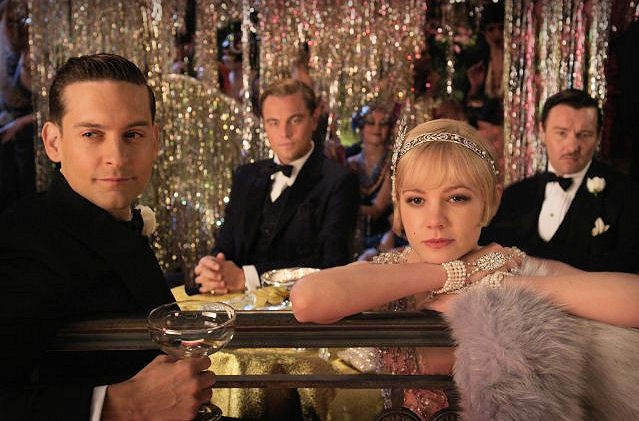
 Baz Luhrmann’s sumptuous version of The Great Gatsby is a dazzling reimagining of F. Scott Fitzgerald’s 1925 novel of old and new money and the American dream. The Australian director and his wife, costume and production designer extraordinaire Catherine Martin, have turned the classic tale into a lush spectacle without losing focus on the main story of life and love during the Roaring Twenties. Leonardo DiCaprio, who played the male lead in Lurhmann’s contemporary take on Romeo + Juliet, is superb as Jay Gatsby, the mystery man previously portrayed by Warner Baxter in 1926, Alan Ladd in 1949, Robert Redford in 1974, and Toby Stephens in 2000, adding a compelling level of vulnerability to the character. Gatsby has built a magnificent palace for himself on Long Island, hosting wild parties that he doesn’t care about; all he truly wants is Daisy (Carey Mulligan), a former love who has married successful businessman Tom Buchanan (Joel Edgerton) and lives in a mansion right across the bay. The villainous Tom is having an affair with the lower-class Myrtle Wilson (Isla Fisher), whose unaware husband, George (Jason Clarke), runs a gas station and garage in the Valley of Ashes. Although a loner, Gatsby befriends his neighbor, Nick Carraway (Tobey Maguire), a young, innocent bond trader who rents a modest home at the base of Gatsby’s enormous estate and whose cousin just happens to be Daisy. As Carraway is sucked into this glamorous, debauched society, which also includes wild and elegant golf champion Jordan Baker (Elizabeth Debicki), he is forced to reexamine his own hopes and dreams as he tries to find his place in the world.
Baz Luhrmann’s sumptuous version of The Great Gatsby is a dazzling reimagining of F. Scott Fitzgerald’s 1925 novel of old and new money and the American dream. The Australian director and his wife, costume and production designer extraordinaire Catherine Martin, have turned the classic tale into a lush spectacle without losing focus on the main story of life and love during the Roaring Twenties. Leonardo DiCaprio, who played the male lead in Lurhmann’s contemporary take on Romeo + Juliet, is superb as Jay Gatsby, the mystery man previously portrayed by Warner Baxter in 1926, Alan Ladd in 1949, Robert Redford in 1974, and Toby Stephens in 2000, adding a compelling level of vulnerability to the character. Gatsby has built a magnificent palace for himself on Long Island, hosting wild parties that he doesn’t care about; all he truly wants is Daisy (Carey Mulligan), a former love who has married successful businessman Tom Buchanan (Joel Edgerton) and lives in a mansion right across the bay. The villainous Tom is having an affair with the lower-class Myrtle Wilson (Isla Fisher), whose unaware husband, George (Jason Clarke), runs a gas station and garage in the Valley of Ashes. Although a loner, Gatsby befriends his neighbor, Nick Carraway (Tobey Maguire), a young, innocent bond trader who rents a modest home at the base of Gatsby’s enormous estate and whose cousin just happens to be Daisy. As Carraway is sucked into this glamorous, debauched society, which also includes wild and elegant golf champion Jordan Baker (Elizabeth Debicki), he is forced to reexamine his own hopes and dreams as he tries to find his place in the world.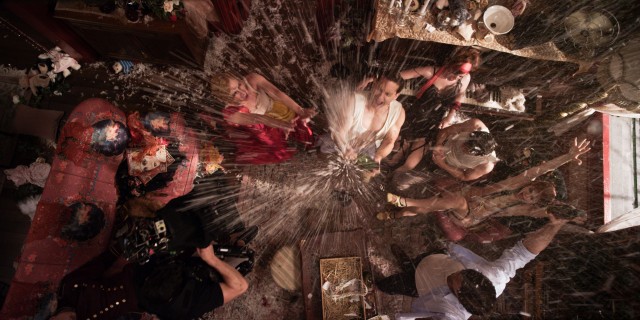

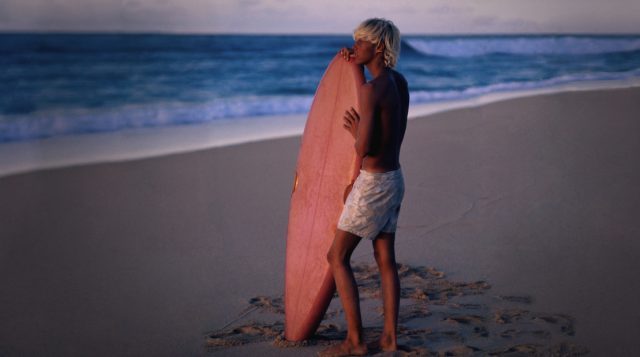
 Former Japanese national surfing champion Takuji Masuda documents the wild life and times of sugar scion Bunker Spreckels in the bumpy, oddly titled Bunker77, which is having its New York City premiere November 16 and 17 at the DOC NYC festival. Born in Los Angeles in 1949, Spreckels is described in the film by friends and relatives as “radical,” “original,” “unique,” “dangerous,” and “fun,” a blond beach bum and party lover who rode waves around the world with his specially made short boards. “That was his international persona: the hunter, the surfer, the playboy, the jet-setter, the martial artist, all in one,” skateboard legend Tony Alva says of his friend and mentor. Spreckels’s grandfather, Adolph B. Spreckels, ran the Spreckels Sugar Company and, with his wife, Alma, helped develop the cities of San Francisco and San Diego. After Spreckels’s parents, Adolph B. Spreckels II and former actress Kay Williams, divorced, his mother married Clark Gable, who helped raise Bunker and his sister, Joan, for five years. Bunker always did things his own way, but his life spiraled out of control once he turned twenty-one and gained access to his multimillion-dollar trust fund, caught up in a storm of drugs, alcohol and women. He tried to become a rock star and a screen idol while skateboarding and surfing in California, Hawai’i, Australia, and South Africa. His story is told by such surfing legends as Laird Hamilton, Vinny Bryan, Bill Hamilton, Rory Russell, Nat Young, Herbie Fletcher, Spyder Wills, and Wayne Bartholomew; childhood friends Curtis Allen (son of cowboy movie star Rex Allen) and Ira Opper; Surfer magazine photographer Art Brewer, associate editor Kurt Ledterman, chief editor Drew Kampion, and publisher Steve Pezman; longtime girlfriend Ellie Silva; and journalist C. R. Steyck III, whose extensive interview with Spreckels near the end of his life is sprinkled throughout the documentary. Masuda also includes home movies, photographs, relevant clips from Gable films, and scenes from 2005’s Lords of Dogtown, in which Johnny Knoxville plays Topper Burks, who is based on Spreckels, and 1961’s Blue Hawaii, in which Elvis Presley plays a character eerily similar to Bunker. “You can definitely have too much fun with too much money,” Bartholomew says, while Steyck adds, “He was a dangerous man, mainly dangerous to himself.”
Former Japanese national surfing champion Takuji Masuda documents the wild life and times of sugar scion Bunker Spreckels in the bumpy, oddly titled Bunker77, which is having its New York City premiere November 16 and 17 at the DOC NYC festival. Born in Los Angeles in 1949, Spreckels is described in the film by friends and relatives as “radical,” “original,” “unique,” “dangerous,” and “fun,” a blond beach bum and party lover who rode waves around the world with his specially made short boards. “That was his international persona: the hunter, the surfer, the playboy, the jet-setter, the martial artist, all in one,” skateboard legend Tony Alva says of his friend and mentor. Spreckels’s grandfather, Adolph B. Spreckels, ran the Spreckels Sugar Company and, with his wife, Alma, helped develop the cities of San Francisco and San Diego. After Spreckels’s parents, Adolph B. Spreckels II and former actress Kay Williams, divorced, his mother married Clark Gable, who helped raise Bunker and his sister, Joan, for five years. Bunker always did things his own way, but his life spiraled out of control once he turned twenty-one and gained access to his multimillion-dollar trust fund, caught up in a storm of drugs, alcohol and women. He tried to become a rock star and a screen idol while skateboarding and surfing in California, Hawai’i, Australia, and South Africa. His story is told by such surfing legends as Laird Hamilton, Vinny Bryan, Bill Hamilton, Rory Russell, Nat Young, Herbie Fletcher, Spyder Wills, and Wayne Bartholomew; childhood friends Curtis Allen (son of cowboy movie star Rex Allen) and Ira Opper; Surfer magazine photographer Art Brewer, associate editor Kurt Ledterman, chief editor Drew Kampion, and publisher Steve Pezman; longtime girlfriend Ellie Silva; and journalist C. R. Steyck III, whose extensive interview with Spreckels near the end of his life is sprinkled throughout the documentary. Masuda also includes home movies, photographs, relevant clips from Gable films, and scenes from 2005’s Lords of Dogtown, in which Johnny Knoxville plays Topper Burks, who is based on Spreckels, and 1961’s Blue Hawaii, in which Elvis Presley plays a character eerily similar to Bunker. “You can definitely have too much fun with too much money,” Bartholomew says, while Steyck adds, “He was a dangerous man, mainly dangerous to himself.”